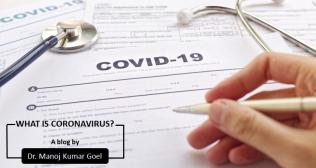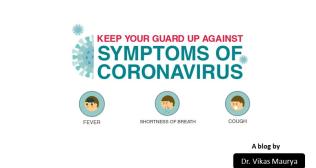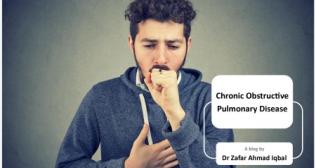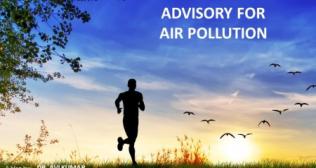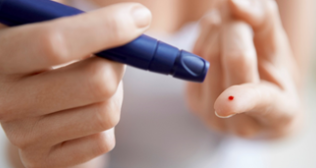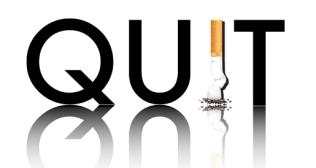
Lung Damage: Key Causes, Symptoms, Treatments, and Prevention Tips
With every breath we take, our lungs perform a vital, life-sustaining miracle; drawing in oxygen to fuel our bodies and expelling carbon dioxide. We take this fundamental process for granted, often forgetting that these delicate organs are constantly exposed to the outside world. From the air we breathe to the habits we keep, our lungs face numerous threats that can lead to significant and sometimes irreversible damage.
Understanding the risks and recognizing the early warning signs of lung damage is crucial for maintaining respiratory health throughout our lives. This guide will explore the key causes of lung damage, the symptoms to watch for, and the most effective treatment and prevention strategies available.
The Primary Causes of Lung Damage
Lung damage can result from a wide range of factors, from lifestyle choices to environmental exposures. Over time, these factors can injure the delicate tissues of the lungs, impairing their ability to function correctly.
- Smoking and Tobacco Use: This is, without question, the leading cause of preventable lung damage. The toxic chemicals in cigarette smoke inflame and scar lung tissue, destroy the tiny air sacs (alveoli), and paralyze the cilia that clear mucus and debris. Smoking is the primary cause of chronic obstructive pulmonary disease (COPD) and lung cancer.
- Air Pollution: Both outdoor and indoor air pollution pose a significant threat. Outdoor pollutants from vehicle exhaust, industrial emissions, and wildfires can irritate and damage the airways. Indoor air quality can be compromised by mold, dust mites, secondhand smoke, and fumes from cleaning products or cooking.
- Occupational Exposures: Many workplaces expose individuals to harmful dust, chemicals, and fumes. Substances like asbestos, silica dust, coal dust, and certain industrial chemicals can cause permanent scarring and inflammation, leading to occupational lung diseases like asbestosis and silicosis.
- Infections: Severe or recurring respiratory infections can cause significant lung damage. Pneumonia, tuberculosis, and viral infections like influenza and COVID-19 can lead to inflammation, fluid buildup, and scarring that can have long-lasting effects on lung function.
- Chronic Lung Diseases: Conditions like asthma, if poorly managed, can cause long-term inflammation and airway remodeling. Other diseases, such as idiopathic pulmonary fibrosis, involve the progressive scarring of lung tissue without a known cause.
Recognizing the Symptoms of Lung Damage
The symptoms of lung damage can develop slowly over time, and it's easy to dismiss them initially. However, paying attention to these warning signs is key to early diagnosis and treatment.
Common symptoms include:
- Chronic Cough: A cough that lasts for eight weeks or longer, whether it's dry or produces mucus.
- Shortness of Breath (Dyspnea): Feeling out of breath during activities that you used to handle with ease, or even while at rest.
- Wheezing: A high-pitched whistling sound when you breathe, which indicates that your airways are narrowed.
- Excess Mucus Production: Your airways produce mucus to trap irritants. If you are consistently coughing up phlegm for a month or more, it could be a sign of a problem.
- Chest Pain: Unexplained chest pain that lasts for a month or more, especially if it worsens when you breathe or cough.
- Coughing up Blood (Hemoptysis): This is always a serious symptom that requires immediate medical attention.
Diagnosis and Treatment for Damaged Lungs
If you are experiencing any of the symptoms above, a doctor will perform a thorough evaluation to determine the cause and extent of the lung damage.
- Diagnostic Tools: Diagnosis often involves a physical exam, lung function tests (spirometry) to measure how well your lungs work, imaging tests like chest X-rays or CT scans to look for abnormalities, and sometimes a bronchoscopy, where a thin tube is used to look inside the airways.
Treatment Approaches: Treatment for lung damage is focused on managing the underlying cause, relieving symptoms, and improving quality of life.
- Medications: Bronchodilators can help open the airways, inhaled or oral steroids can reduce inflammation, and antibiotics are used to treat infections.
- Oxygen Therapy: For individuals with low blood oxygen levels, supplemental oxygen can reduce breathlessness and support organ function.
- Pulmonary Rehabilitation: This is a comprehensive program that includes exercise training, breathing techniques, nutritional advice, and counseling to help you manage your condition effectively.
- Surgery: In some severe cases, such as for advanced lung cancer or end-stage COPD, surgery to remove damaged lung tissue or even a lung transplant may be considered.
Prevention: Your First Line of Defense
While some causes of lung damage are not entirely within our control, there are many proactive steps you can take to protect your lungs.
- Don't Smoke: If you smoke, quitting is the single most important thing you can do for your lung health. If you don't smoke, don't start.
- Avoid Secondhand Smoke: Steer clear of environments where others are smoking.
- Minimize Exposure to Pollutants: Pay attention to air quality reports and avoid strenuous outdoor exercise on days with high pollution. Use air purifiers at home if necessary.
- Get Regular Vaccinations: Stay up-to-date on vaccines for the flu, pneumonia, and COVID-19 to prevent infections that can harm your lungs.
- Exercise Regularly: Physical activity strengthens your lungs and improves their efficiency.
- Use Protective Gear: If you work in a high-risk occupation, always use the appropriate respiratory protective equipment provided.
Taking Charge of Your Respiratory Health
Our lungs work tirelessly for us every second of every day. Protecting them from damage is one of the most important investments we can make in our long-term health and well-being. By understanding the risks, recognizing the symptoms, and adopting a lung-healthy lifestyle, you can breathe easier for years to come.
Frequently Asked Questions
1. Can lungs heal themselves from damage?
Ans. The lungs have some ability to repair themselves, but severe damage, especially scarring (fibrosis), is often permanent. Quitting smoking can lead to significant improvement in lung function.
2. What is the single worst thing for your lungs?
Ans. Smoking tobacco is overwhelmingly the most damaging activity for lung health, directly causing cancer, COPD, and a host of other respiratory illnesses.
3. How can I improve my lung health?
Ans. Regular aerobic exercise, practicing deep breathing techniques, avoiding pollutants and smoke, and eating a diet rich in antioxidants can all help improve and maintain lung health.
4. Does vaping cause lung damage?
Ans. Yes, vaping can cause lung damage. The aerosols from e-cigarettes contain harmful chemicals, heavy metals, and ultrafine particles that can lead to inflammation and injury.
5. What foods are good for your lungs?
Ans. Foods rich in antioxidants and vitamins, such as berries, leafy greens, broccoli, turmeric, and green tea, can help reduce inflammation and support overall lung health.







